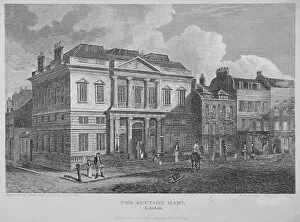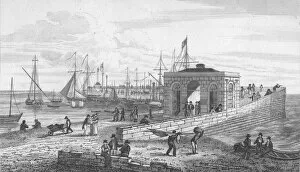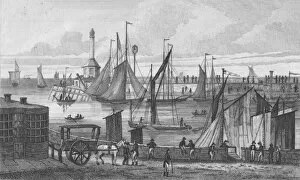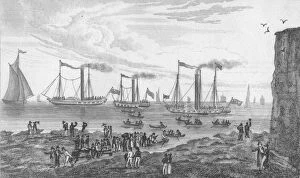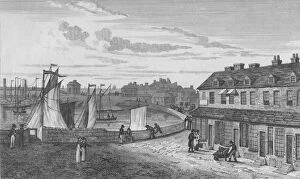John Shury Collection
John Shury was a talented artist known for his detailed and captivating depictions of various scenes in London during the 19th century
For sale as Licensed Images
Choose your image, Select your licence and Download the media
John Shury was a talented artist known for his detailed and captivating depictions of various scenes in London during the 19th century. His works provide us with a glimpse into the rich history and vibrant atmosphere of this bustling city. One of his notable pieces is "The Chinese collection, Hyde Park Corner, Westminster, London, c1841. " In this painting, Shury captures the exotic allure of Chinese culture as it permeates through the heart of London. The vibrant colors and intricate details transport viewers to another world. Another masterpiece by Shury is "Interior view of the crypt, St Saviours Church, Southwark, London, 1830. " This painting reveals the solemn beauty hidden beneath the surface. With meticulous brushstrokes and careful attention to lighting, Shury brings to life the mysterious ambiance that resides within this sacred space. Shury's talent for capturing architectural marvels can be seen in his work titled "Astleys Amphitheatre and adjacent buildings, Westminster Bridge Road, Lambeth, London, c1775. " Through precise lines and skillful shading techniques he immortalizes this iconic structure along with its surroundings. In "View of Auction Mart in Bartholomew Lane City of London 1815, " we get a glimpse into an important hub for commerce during that era. Shury's keen eye for detail allows us to witness the hustle and bustle surrounding these auctions while also appreciating their historical significance. "The Discipline Mill at Brixton Prison, Lambeth, London 1821" showcases yet another facet of John Shury's versatility as an artist. Here he portrays a scene from inside Brixton Prison where discipline was enforced through hard labor. The somber tones reflect both the harsh reality faced by prisoners as well as society's approach towards punishment at that time. Shifting our focus to landmarks that define London's landscape; one such example is captured in "Southwark Bridge, London 1819.




